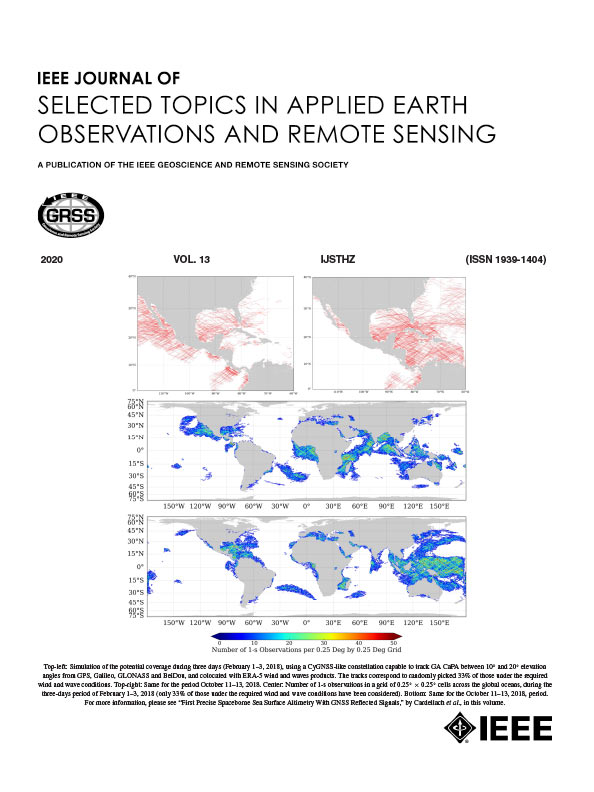Nighttime PM2.5 Concentration Estimation Based on NPP-VIIRS and Interpretable Machine Learning: The Case of Beijing–Tianjin–Hebei Region
IF 4.7
2区 地球科学
Q1 ENGINEERING, ELECTRICAL & ELECTRONIC
IEEE Journal of Selected Topics in Applied Earth Observations and Remote Sensing
Pub Date : 2025-04-11
DOI:10.1109/JSTARS.2025.3560136
引用次数: 0
Abstract
Air pollution and public health issues caused by fine particulate matter (PM2.5) are becoming increasingly severe. Although well-established satellite methods exist for retrieving daytime PM2.5 concentrations, these methods are limited by weak nighttime light radiation. To resolve these challenges, this study proposed a nighttime PM2.5 concentration estimation method based on explainable machine learning and low-light data. Owing to the complexity of nighttime light sources, primarily composed of artificial lighting and moonlight, both types of light were considered by simulating lunar irradiance and artificial light radiance. This study utilized nighttime lighting, meteorological, various geospatial auxiliary, simulated nighttime light radiation, and ground-based PM2.5 monitoring data to construct a dataset with an effective sample size of 24,311. A deep neural network model was trained to estimate nighttime PM2.5 concentrations. The experimental results show that, after adding the simulated nighttime light radiation, the tenfold cross-validation基于NPP-VIIRS和可解释机器学习的夜间PM2.5浓度估算——以京津冀地区为例
由细颗粒物(PM2.5)引起的空气污染和公共健康问题日益严重。虽然已有成熟的卫星方法来获取白天PM2.5浓度,但这些方法受到夜间弱光辐射的限制。为了解决这些挑战,本研究提出了一种基于可解释的机器学习和低光照数据的夜间PM2.5浓度估计方法。由于夜间光源的复杂性,主要由人工照明和月光组成,因此通过模拟月球辐照度和人工光辐照度来考虑这两种类型的光。本研究利用夜间照明、气象、各种地理空间辅助、模拟夜间光辐射和地面PM2.5监测数据,构建有效样本量为24311的数据集。训练深度神经网络模型来估计夜间PM2.5浓度。实验结果表明,加入模拟夜间光辐射后,模型的十倍交叉验证R2由0.6提高到0.73。此外,74%基于站点的十倍交叉验证R2值超过0.7,表明该模型具有较强的空间适应性。然后使用该模型估计2021年研究区域夜间PM2.5浓度。采用Shapley加性解释模型分析不同预测因子对夜间PM2.5的影响曲线,考察各因素的贡献。本研究可为今后的类似研究提供参考,所提出的反演方法覆盖范围广,为地面站测量提供了有益的补充。
本文章由计算机程序翻译,如有差异,请以英文原文为准。
求助全文
约1分钟内获得全文
求助全文
来源期刊
CiteScore
9.30
自引率
10.90%
发文量
563
审稿时长
4.7 months
期刊介绍:
The IEEE Journal of Selected Topics in Applied Earth Observations and Remote Sensing addresses the growing field of applications in Earth observations and remote sensing, and also provides a venue for the rapidly expanding special issues that are being sponsored by the IEEE Geosciences and Remote Sensing Society. The journal draws upon the experience of the highly successful “IEEE Transactions on Geoscience and Remote Sensing” and provide a complementary medium for the wide range of topics in applied earth observations. The ‘Applications’ areas encompasses the societal benefit areas of the Global Earth Observations Systems of Systems (GEOSS) program. Through deliberations over two years, ministers from 50 countries agreed to identify nine areas where Earth observation could positively impact the quality of life and health of their respective countries. Some of these are areas not traditionally addressed in the IEEE context. These include biodiversity, health and climate. Yet it is the skill sets of IEEE members, in areas such as observations, communications, computers, signal processing, standards and ocean engineering, that form the technical underpinnings of GEOSS. Thus, the Journal attracts a broad range of interests that serves both present members in new ways and expands the IEEE visibility into new areas.

 求助内容:
求助内容: 应助结果提醒方式:
应助结果提醒方式:


